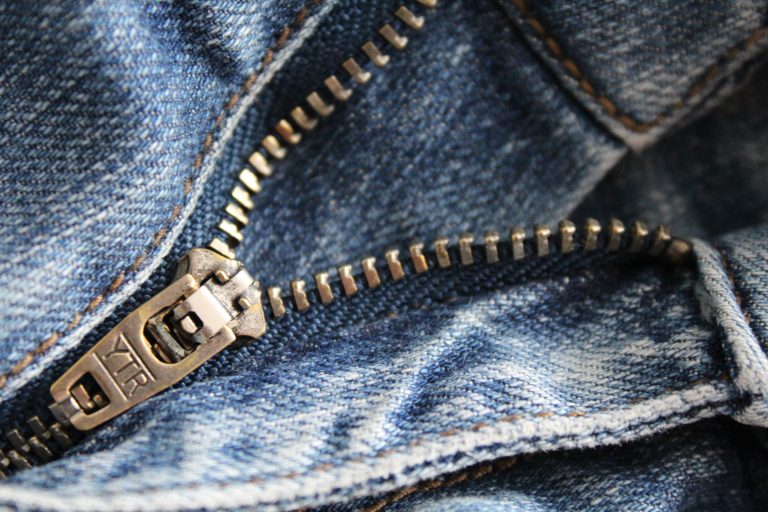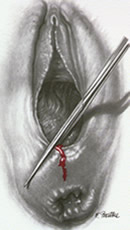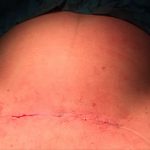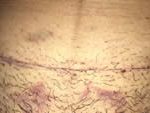- Citas Centro Médico de Caracas: Lunes, Miercoles y Viernes. Pulse el botón Agende una Cita
- Sistema de citas en linea exclusivo para Centro Medico de Caracas en San Bernardino
- Citas CMDLT: Jueves. llamar al 0212-9496243 y 9496245
- Las Emergencias son atendidas en CMDLT previa coordinacion personal al 04142708338
- Proveedor Seguros Mercantil y Sudeban

We do not know for sure how the healing process is, in fact we can not improve it in cases where we need effective healing or we can stop it from forming hypertrophic wounds, retractions and keloids. This is why I follow the recommendations of the best clinical evidence in the management of surgical wounds:
Do not manipulate or use antiseptics or clean a properly dressed wound, this prevents infections and loss of aesthetic effect
That’s right, the less an uncomplicated wound is handled the better its aesthetic result will be and the lower the risk of local infectious complications.
Care of obstetric wounds
Let’s talk about the two types of surgical wounds we see in obstetrics: vaginal wounds (episiotomy) and abdominal wounds (cesarean)
Episiotomy
This is the wound product of the vulvo-vaginal incision that we practice during the expulsion of the fetal head to avoid uncontrolled tears of the recto-vaginal region. The suture of the wound is called Episiorrhaphy. The suture used for the closure is absorbable and low inflammatory reaction so that the area bothers little during the recovery period. Do not remove the points, they degrade themselves (actually the body absorbs them in about 18-45 days).
Care: No topical antibiotic or creams or antiseptics are used, including iodine-povidone preparations. Genital washing (not douching) during the bath and 2 or 3 local toilets a day with water is more than enough to adequately care for an episiorrhaphy. Every day you should gently touch with your fingers the line of the suture (during bathing and washing) in search of some painful point: typically the wound hurts less as the days go by, if you notice that some part of the wound begins to hurt (usually between 5 to 7 days postpartum) you must notify your doctor, this is an early sign of infection; treatment with antibiotics is indicated and in this way abscesses (accumulation of pus) in the wound are prevented.
Avoid making great efforts and weight, if there is constipation (constipation) use drugs that make you evacuate more easily to avoid long session of pushing that could lead to bleeding and bruising of the surgical wound.
In most cases, no complications occur and after a week the patient has already forgotten the existence of the wound, which by that time is already called a scar.
Any doubt consult your doctor.
Cesarean: incision of Pfannensteil, Joel-Cohen or Vertical infraumbilical
There are basically two types of incisions
- Infraumbilical (medial) is made in the midline of the abdomen below the navel, with poor cosmetic results.
- Transverse of Pfannensteil is a transverse incision made below the bikini line. We always perform transverse incisions unless the patient has had a previous vertical surgery.
The care of both wounds is exactly the same. Every day, the wound is gently touched with the fingers (above the covering dressing) to verify that the wound pain is decreasing progressively. Again, if on the 5th to 7th day of the postoperative period you notice a more painful point you should call your doctor because it is possible that you are starting a wound infection. He will tell you antibiotics, surely.
In my particular case, I avoid changing cures during hospitalization, unless they are very stained with blood, because I believe that this cure was done in the best aseptic conditions possible: in the operating room.
The patient goes home with her dressing and is allowed to wet it during the bath (you must dry it afterwards, of course), it is not recommended to apply any product on the cure and if the latter should fall you are instructed to clean the wound Like any part of your skin during bathing, with your bath soap, without applying then any type of antibiotic or antiseptic substance, the less you touch it the better. Ignore the indications of your family and / or friends. In fact, what I recommend to my patients is that if the dressing falls, only cover it with the panties without gauze or adhesive.
The use of the abdominal girdle supports, limits the pain of the movements and gives a great sense of security with respect to the wound: but do not abuse remember that the pain is a warning that you have to decrease the efforts
The wound does not open itself without an important condition: infections, poor surgical technique, diabetes, chronic diseases, etc.
The cure (if still fixed) and the stitches are removed on the 8th day after the procedure and the wound is left exposed, if at all covered by the upper edge of the pantyhose. The patient is instructed to perform a vigorous toilet each time she bathes to remove the small crusts that remain attached and that she is not afraid of her wound. If the repair of the wound is made with absorbable suture, it will not require removal.
Video: removal of subcuticular sutures.
The sensitivity of the area is recovered in 3 to 6 months, remember that nerve bundles were cut and these require time to regenerate.
Remember: if fever occurs in the post-operative period (postpartum), contact your obstetrician immediately. If you have any doubt, ask your doctor, do not self-medicate although the answer seems to be here; It is always better to be evaluated by a specialist.
Vaginal delivery
Episiotomy: opening of the pelvic floor during fetal expulsion to avoid uncontrolled tears

Episiotomy: avoid perineal tears
Episiotraphy: surgical repair of the episiotomy to restore local anatomy.

Episiorrhaphy: perineal repair
Caesarean section
Incision of Joel Cohen during the final stage of a Caesarean Section. Note the suture (Vycril Rapid 3-0) in the lower right corner of the photo. That thread will be cut flush with skin 8 days later and the patient will not have to visit the office for withdrawal of points. Sometimes I use internal knots at the ends so that it is not necessary to cut any thread (this step removes all care and attention of the wound, making it easier postoperative).
Appearance of the wound when removing the cure and cutting the suture strands at each end on the 8th day. There are still some signs of blood extravasation due to tissue manipulation.
Final closure of the incision through the use of skin clamps. We tend to use intradermal suture: it is cheaper and the aesthetic effect is better.


